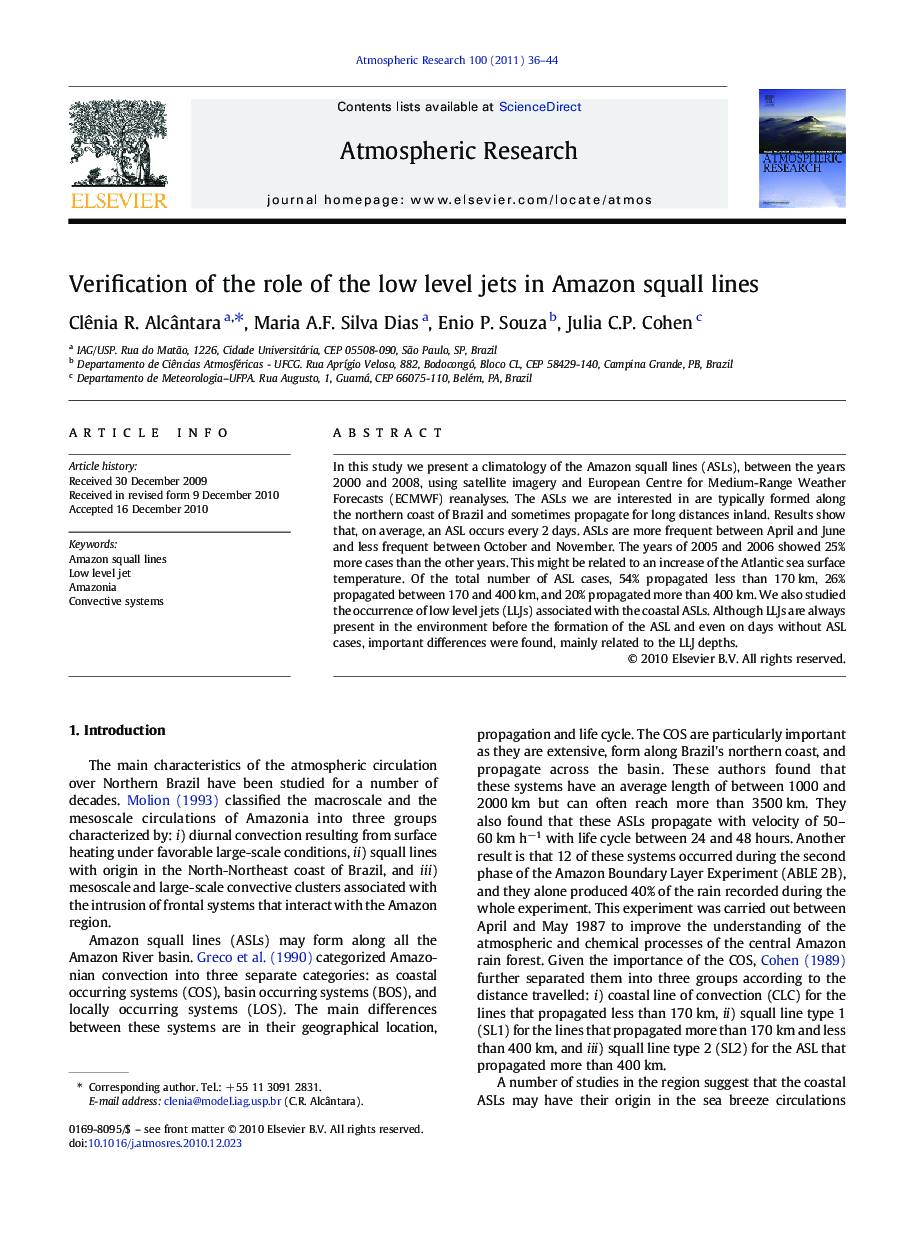| Article ID | Journal | Published Year | Pages | File Type |
|---|---|---|---|---|
| 4450491 | Atmospheric Research | 2011 | 9 Pages |
In this study we present a climatology of the Amazon squall lines (ASLs), between the years 2000 and 2008, using satellite imagery and European Centre for Medium-Range Weather Forecasts (ECMWF) reanalyses. The ASLs we are interested in are typically formed along the northern coast of Brazil and sometimes propagate for long distances inland. Results show that, on average, an ASL occurs every 2 days. ASLs are more frequent between April and June and less frequent between October and November. The years of 2005 and 2006 showed 25% more cases than the other years. This might be related to an increase of the Atlantic sea surface temperature. Of the total number of ASL cases, 54% propagated less than 170 km, 26% propagated between 170 and 400 km, and 20% propagated more than 400 km. We also studied the occurrence of low level jets (LLJs) associated with the coastal ASLs. Although LLJs are always present in the environment before the formation of the ASL and even on days without ASL cases, important differences were found, mainly related to the LLJ depths.
Research Highlights► A climatology of the Amazon squall lines (ASLs), between the years 2000 and 2008. ► The ASLs form along the northern coast of Brazil and propagate for long distances inland, 54% propagated less than 170 km, 26% between 170 and 400 km, and 20% more than 400 km. ► ASL occur on average every 2 days and are more frequent between April and June. ► Low level jets (LLJs) are always present in the environment before the formation of the ASL and even on days without ASL cases. ► Important differences in ASL propagation were found, mainly related to the LLJ depths.
